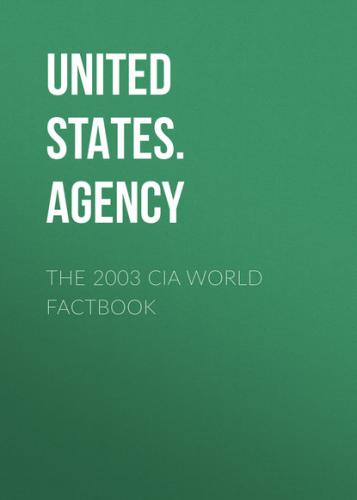People Angola
Population:
10,766,471 (July 2003 est.)
Age structure:
0–14 years: 43.5% (male 2,363,829; female 2,317,610)
15–64 years: 53.7% (male 2,941,999; female 2,842,923)
65 years and over: 2.8% (male 134,330; female 165,780) (2003 est.)
Median age:
total: 18.2 years
male: 18.2 years
female: 18.2 years (2002)
Population growth rate:
1.97% (2003 est.)
Birth rate:
45.57 births/1,000 population (2003 est.)
Death rate:
25.83 deaths/1,000 population (2003 est.)
Net migration rate:
0 migrant(s)/1,000 population (2003 est.)
Sex ratio:
at birth: 1.05 male(s)/female
under 15 years: 1.02 male(s)/female
15–64 years: 1.03 male(s)/female
65 years and over: 0.81 male(s)/female
total population: 1.02 male(s)/female (2003 est.)
Infant mortality rate:
total: 193.82 deaths/1,000 live births
female: 180.76 deaths/1,000 live births (2003 est.)
male: 206.26 deaths/1,000 live births
Life expectancy at birth:
total population: 36.96 years
male: 36.13 years
female: 37.83 years (2003 est.)
Total fertility rate:
6.38 children born/woman (2003 est.)
HIV/AIDS - adult prevalence rate:
5.5% (2001 est.)
HIV/AIDS - people living with HIV/AIDS:
350,000 (2001 est.)
HIV/AIDS - deaths:
24,000 (2001 est.)
Nationality:
noun: Angolan(s)
adjective: Angolan
Ethnic groups:
Ovimbundu 37%, Kimbundu 25%, Bakongo 13%, mestico (mixed European
and Native African) 2%, European 1%, other 22%
Religions:
indigenous beliefs 47%, Roman Catholic 38%, Protestant 15% (1998
est.)
Languages:
Portuguese (official), Bantu and other African languages
Literacy:
definition: age 15 and over can read and write
total population: 42%
male: 56%
female: 28% (1998 est.)
Government Angola
Country name:
conventional long form: Republic of Angola
conventional short form: Angola
local short form: Angola
former: People's Republic of Angola
local long form: Republica de Angola
Government type:
republic, nominally a multiparty democracy with a strong
presidential system
Capital:
Luanda
Administrative divisions:
18 provinces (provincias, singular - provincia); Bengo, Benguela,
Bie, Cabinda, Cuando Cubango, Cuanza Norte, Cuanza Sul, Cunene,
Huambo, Huila, Luanda, Lunda Norte, Lunda Sul, Malanje, Moxico,
Namibe, Uige, Zaire
Independence:
11 November 1975 (from Portugal)
National holiday:
Independence Day, 11 November (1975)
Constitution:
11 November 1975; revised 7 January 1978, 11 August 1980, 6 March
1991, and 26 August 1992
Legal system:
based on Portuguese civil law system and customary law; recently
modified to accommodate political pluralism and increased use of
free markets
Suffrage:
18 years of age; universal
Executive branch:
chief of state: President Jose Eduardo DOS SANTOS (since 21
September 1979); note - the president is both chief of state and
head of government
head of government: President Jose Eduardo DOS SANTOS (since 21
September 1979); note - the president is both chief of state and
head of government; Fernando de Piedade Dias DOS SANTOS was
appointed Prime Minister on 6 December 2002, but this is not a
position of real power
cabinet: Council of Ministers appointed by the president
elections: president elected by universal ballot for a NA-year term;
President DOS SANTOS originally elected (in 1979) without opposition
under a one-party system and stood for reelection in Angola's first
multiparty elections 29–30 September 1992 (next to be held NA)
election results: DOS SANTOS 49.6%, Jonas SAVIMBI 40.1%, making a
run-off election necessary; the run-off was not held and SAVIMBI's
National Union for the Total Independence of Angola (UNITA)
repudiated the results of the first election; the civil war resumed
Legislative branch:
unicameral National Assembly or Assembleia Nacional (220 seats;
members elected by proportional vote to serve four-year terms)
elections: last held 29–30 September 1992 (next to be held NA)
election results: percent of vote by party - MPLA 54%, UNITA 34%,
others 12%; seats by party - MPLA 129, UNITA 70, PRS 6, FNLA 5, PLD
3, others 7
Judicial branch:
Supreme Court or Tribunal da Relacao (judges are appointed by the
president)
Political parties and leaders:
Liberal Democratic Party or PLD [Analia de Victoria PEREIRA];
National Front for the Liberation of Angola or FNLA [disputed
leadership: Lucas NGONDA, Holden ROBERTO]; National Union for the
Total Independence of Angola or UNITA [interim leader: PAULO Lukamba
"Gato"], largest opposition party has engaged in years of armed
resistance; Popular Movement for the Liberation of Angola or MPLA
[Jose Eduardo DOS SANTOS], ruling
